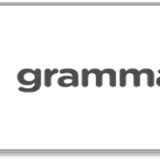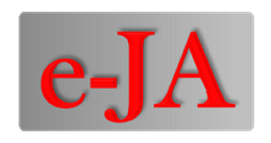Strategic Information Moderated By Effectiveness Management Accounting Information Systems: Business Strategy Approach
DOI:
https://doi.org/10.24912/ja.v25i1.727Abstract
The industrial revolution 4.0 increases business competition and the increasing need for accounting information for strategic decision making. Accounting information is financial information needed by managers to predict and determine the company's strategic policies in the future, however, the current condition of many companies has not been able to produce quality accounting information which has an impact on the production of inappropriate financial policies. This study aims to determine how much the business strategy affects the effectiveness of the use of accounting software and how much the effectiveness of accounting software affects the quality of accounting information. The population in this study were 472 managers of state-owned companies and a total sample of 312 managers of BUMN which were determined by simple random sampling technique. Testing data using covariance-based structural equation modeling (SEM) with Lisrell software. The results of this study prove that State-Owned Enterprises in Indonesia effective application software affects quality accounting information, as well as the company's business strategy affects the effectiveness of accounting software.
References
Abernethy, M.A and Guthrie, C.H. (1994). “An Empirical Assessment of the ‘Fit’ between Strategy &management Information System Design.” Accounting & Finance, Vol.34, No.2, Page.49-66.
Ahmad Al-Hiyari , Mohammed Hamood Hamood AL-Mashre , Nik Kamariah Nik Mat, Jamal Mohammedesmail alekam. (2013). “Factors That Affect Accounting Information System Implementation and Accounting Information Quality: A Survey in University Utara Malaysia.” American Journal of Economics. 2013, 3(1): 27-31.
Barrier, T. (2002). Human Computer Interaction and Management. USA: IRM Press.
Bastian, Elvin, and Munawar Muslich. (2012). “Perceived Environment Uncertainty, Business Strategy, Performance Measurement Systems and Organizational Performance.” Procedia - Social and Behavioral Sciences. Vol. 65 page 787 – 792.
Bockholdt, J. L. (1999). Acounting Information System. Fifth Edition. Singapore: Mc. GrawHill.
Bollen, Kenneth. A and Currant, Patrick. J. (2006). Latent Curve Models Structural Equation Perspective. Canada. Jhon Willey & Sons.
Campbell; D Edgar; and G Stone House. (2002). Business Strategy: An Introduction. Second Edition. United Kingdom: Butterworth-Heinemann an Imprint of Elsevier Sciencez.
Chitmun, S and Ussahawanitchakit, P. (2011). “Management Accounting Systems Sophistication and Decision Making Performance.” Journal of Academy of Business and Economics. Vol.11, No. 3.
Chong, V.K. and Chong, K.M. (1997). “Strategic Choices, Environmental Uncertainty and SBU Performance: A Note on the Intervening Role of Management Accounting Systems.” Accounting and Business Research. Vol. 27, page 268-276.
Collin Drury. (2011). Management Accounting For Business Decision. 2nd Edition. United Kingdom: Thomson Learning.
Davis, Joshua M., William J. Kettinger and Dimitar G. Kurev. (2009). “When User Are It Expert to the Effects of Join IT Competence and Partnership on Satisfaction with Enterprise Level System Implementation.” European Journal Of Information System. Vol. 18, Page.26–37.
De. Lone, William H and Ephraim R. McLean. (1992). “Information System Success: The Quest for The Dependent Variable.” Information System Research. 3 (1) (March). Pp.60-94.
De. Lone, William H and Ephraim R. McLean. (2003). “Information Systems Success: TheQuest for the Dependent Variable.” Information System Research The Instituteof Mangement Science. Page. 15.
Duggan, Evan. W and Han Reichgelt. (2006). Meassuring Information System Delivery Quality. Idea Group Publishing, USA.
Gilbert, Arthur H and Joseph F Singger. (1998). “An Analysis of The Relationship among Perceived Environmental Uncertainty and Business Strategy.” Proceedings of the Academy of Information and Management Science.Vol 2. Number 2. Myrtle Beach.
Gill, David Narajo. (2004). “The Role of Sophisticated Accounting System in Strategy Management.” The International Journal of Digital Accounting Research.
Hair, Joseph F., G. Thomas M. Hult., Christian M. Ringle., and Marko Sarstedt. (2014). A Primer on Partial Least Squares Structural Equation Modeling (PLS-SEM). USA: Sage Publications, inc.
Hansen, D. R. and Mowen, M. M. (2007). Managerial Accounting 8th Edition. USA: Thomson.
Hansen, D.R; Mowen, M.M & Liming Guan. (2009). Cost Management Accounting & Control Sixth Edition. USA: South-Western Cengage Learning.
Heidmann, Marcus. (2008). The Role Management Accounting System in Strategic Sensemaking. Deutcher Universitats Verlag, Germany.
Hoque, Zahirul. (2004). Strategic Management Accounting: Concept, Processes and Issues. Second Edition. USA: Spiro Press.
Kourdi, Jeremy. (2009). Business Strategy: A Guide to Taking Your Business Forward. Second Edition. London: Profile Books Ltd.
Laudon, Kenneth. C and Jane P. Laudon. (2014). Management Information System: Managing The Digital Firm. Thirteenth Edition. USA: South-Western Cengage Learning.
Mc. Leod, R and Schell, G. P. (2007). Management Information Systems. 10th edition. New Jersey: Pearson Education.
Nicolau, A.I. (2000). “A Contigency Model Perceived Effectiveness in Accounting Information Systems: Organizational Condition and Controll Effect.” International Jurnal Of Accounting Information System. 1(2).
Paul M. Healy, Palepu, Khrisna G, and Victory L. Bernard. (2000). Business Analysis & Valuation. 2nd Edition. 2000. USA: South Western College Publishing.
Porter, Michale. E. (1985). Competitive Advantage: Creating and Sustaining Superior Performance. New York: The Free Press.
Puspitawati, Lilis. (2016). “The Analysis of Effectiveness Measurement In Accounting Information Systems Through Competence Factor Of Information System User-Research on Higher Education in Bandung.” IJABER, Vol. 14, No.2., pp.815-841. Serials Publications.
Puspitawati, Lilis, and Azhar Susanto. (2018). “The Influence of Business Strategy through the Management Accounting Information System to the Quality of Management Accounting Information Evidence in Indonesia.” International Conference on Business, Economic, Social Science and Humanities (ICOBEST 2018) Atlantic P.
Rani, D. L. and Kidane, F. (2012). “Characteristics and Important Quality Factors of Management Accounting Information System.” Radix International Journal of Banking, Finance and Accounting (RIJBFA) Volume 1.
Reza Ghasemi, Noor Azmi Mohamad, Meisam Karami, Norkhairul Hafiz Bajuri, Ezzatollah Asgharizade. (2015). “The Relationship among Strategy, Competition and Management Accounting Systems on Organizational Performance.” European Online Journal of Natural and Social Science. www.european-science.com. Vol.4, No.3 pp. 565-581.
Romney, Marshall B and Steinbart, Paul John. (2006). Accounting Information Systems, Tenth Edition. USA: Pearson Education.
Romney, Marshall B and Steinbart, Paul John. (2012). Accounting Information Systems, Twelfth Edition. USA: Pearson Education.
Sangsawang and Ussahawanitchakit. (2013). “Best Managerial Accounting Information and Firm Performance: An Empirical Investigation of Information Technology & Communication Bussiness In Thailand.” Review of Business Research Vol. 13 Is.
Schumacer, E. Randall and Lomax, Richard. (2010). Beginner’s Guide to Structural Equation Modeling. Third Edition. New York: Routledge-Taylor & Francis Group.
Seddon, P.B. (1997). “Information System Research.” Vol. 8 No.
Stair, Ralph M and George Reynold. (2012). Fundamental of Information Systems. Sixth edition.USA: Cengage Learning.
Susanto, A and Meiryani. (2018). “The Quality of Accounting Information System and Its Impact on the Quality of Accounting Information: User Ability and Top Management Support.” Journal of Engineering and Applied Sciences. 13 (2). Page 384-387. Medwell Journal.
Susanto, Azhar. (2017). “How the Quality of Accounting Information Systems Impact on Accounting Information Quality (Research on Higher Education in Bandung).” Journal of Engineering and Applied Sciences 12 (14) 3672-3677. Medwells Journal.
Venkatesh, V., Morris, M.G., Davis, G.B., and Davis, F.D. (2003). “User Acceptance of Information Technology: Toward a Unified View.” MIS Quarterly. Vol.27, No.3, Page.425-478.
Volonino, Linda and Hugh, J Waston. (1991). “The Strategic Business Objectives Method for Guiding Executive Information Systems Development.” Journal of Management Information Systems Vol. 7.
Wheelen Thomas L, David Hunger, Alan N. Hoffman and Charles E Bamford. (2015). Strategic Management and Business Policy: Globalization, Inovation and Sustainability. USA: Fourthteenth Edition.
Wijayanto, Setyo Hari. (2008). Structural Equation Modelling Dengan Sofware Lisrell 8.8: Konsep Dan Tutorial SEM. Yogyakarata: Graha Ilmu.
Wongsim, Manirath, and Jing Gao. (2011). “Exploring Information Quality in Accounting Information Systems Adoption.” IBIMA Publishing Communications of the IBIMA. Vol. 2011 (2011), page 12.
Xiaoying, Dong; Liu Qianqian and Yin Dezhi. (2008). “Business Performance, Business Strategy and Information System: Strategic Aligment: And Empirical Study on Chinese Firm.” Tsinghua S.
Downloads
Published
How to Cite
Issue
Section
License
Copyright (c) 2021 Jurnal Akuntansi

This work is licensed under a Creative Commons Attribution-NonCommercial-ShareAlike 4.0 International License.
This journal provides immediate open access to its content on the principle that making research freely available to the public supports a greater global exchange of knowledge.

This work is licensed under a Creative Commons Attribution-NonCommercial-ShareAlike 4.0 International License



















